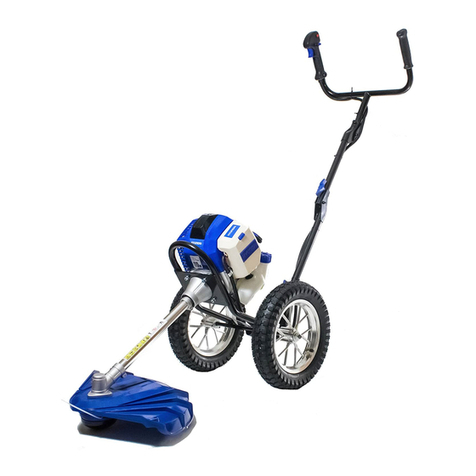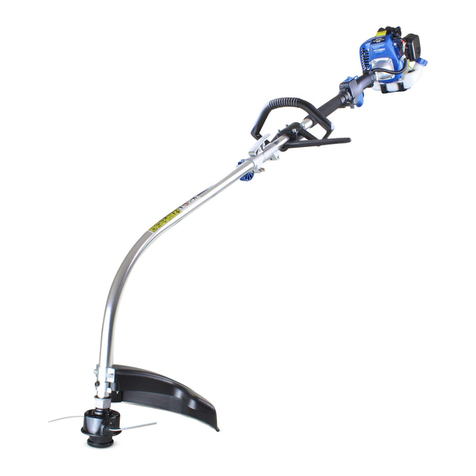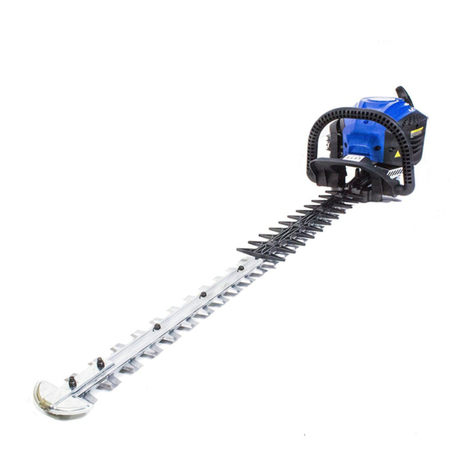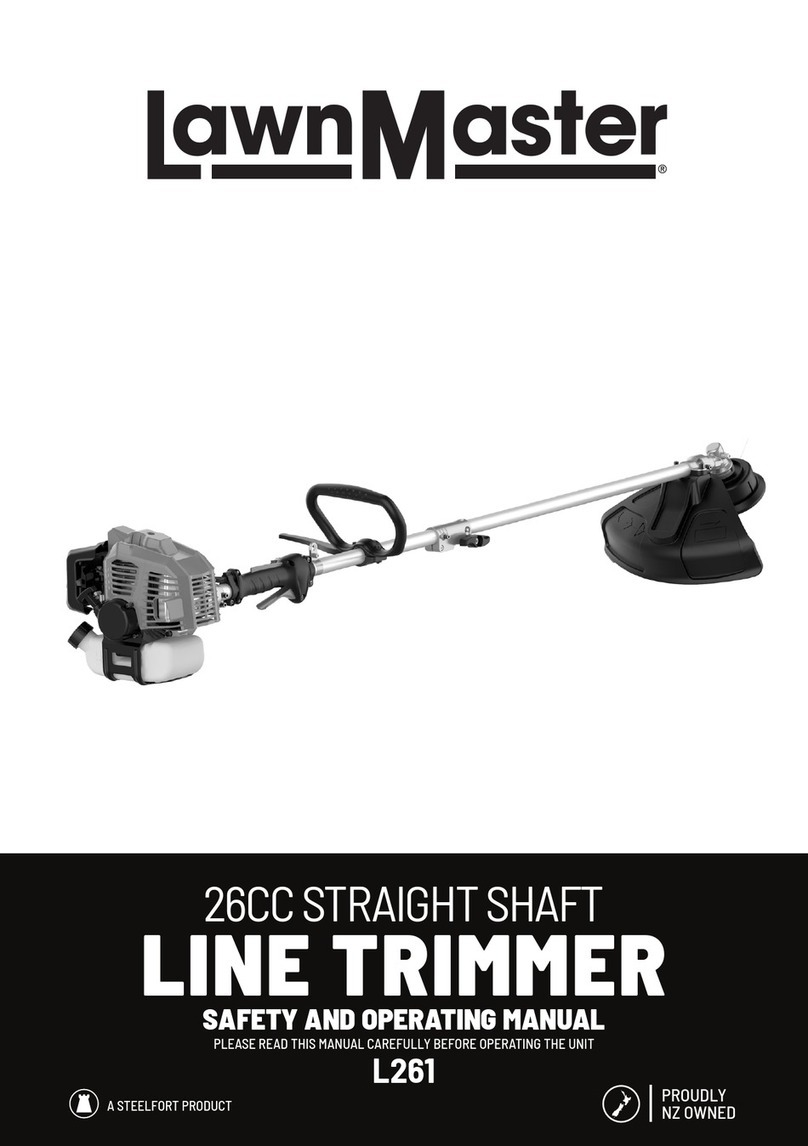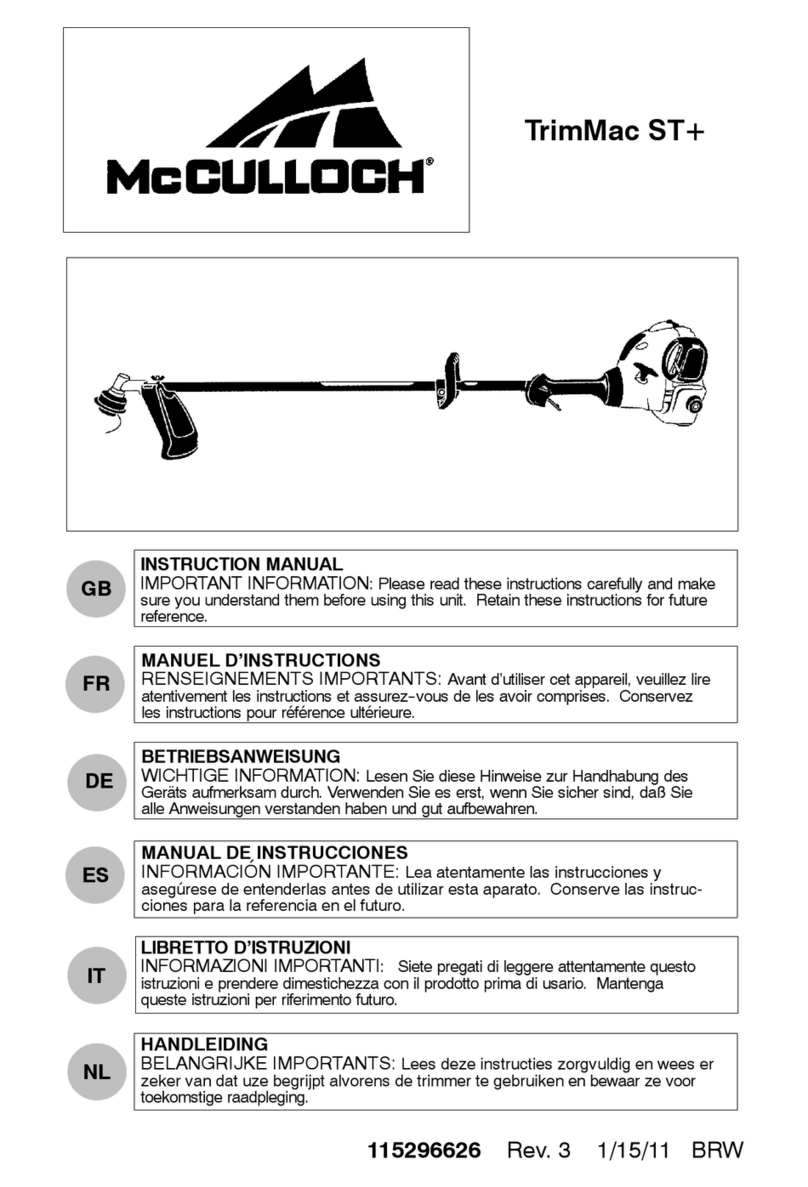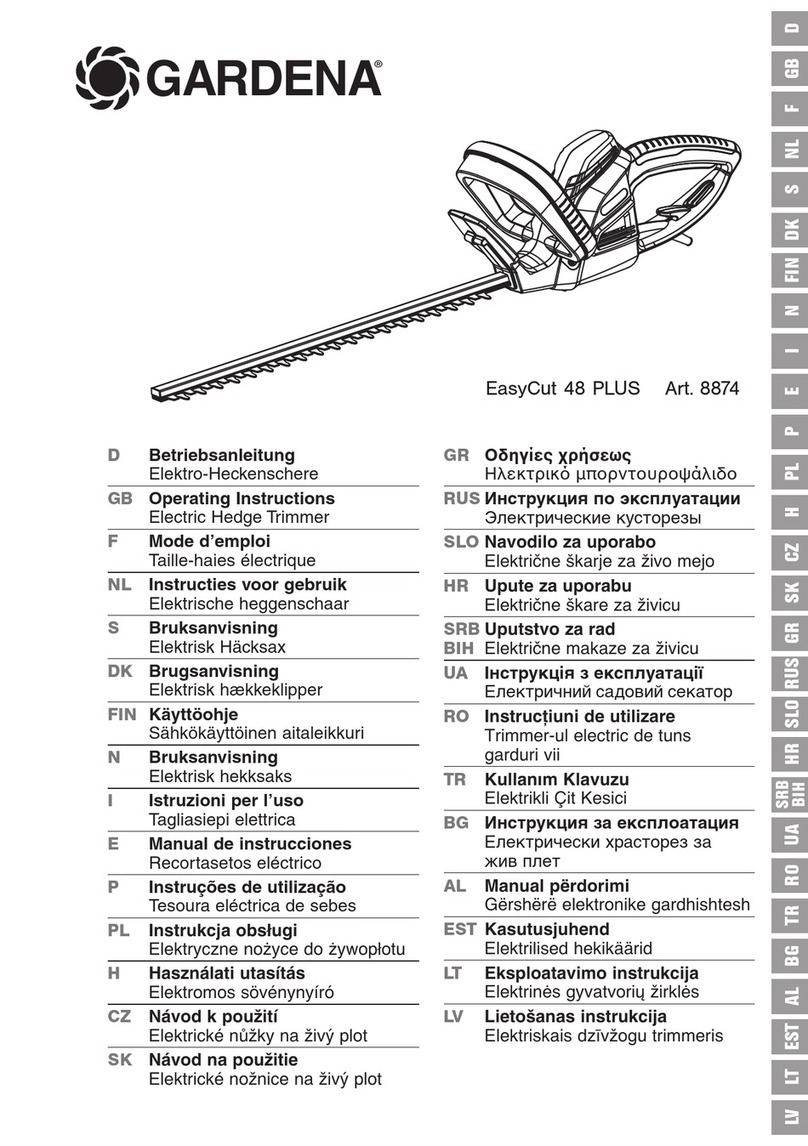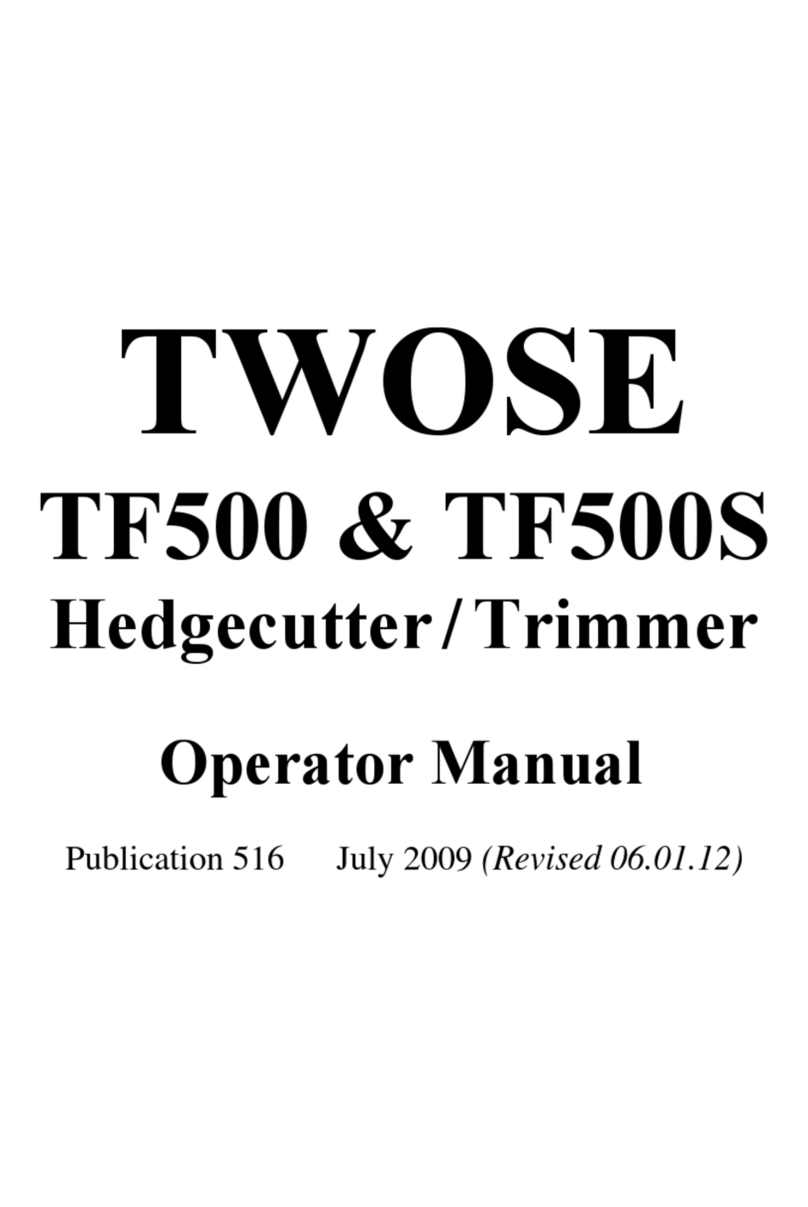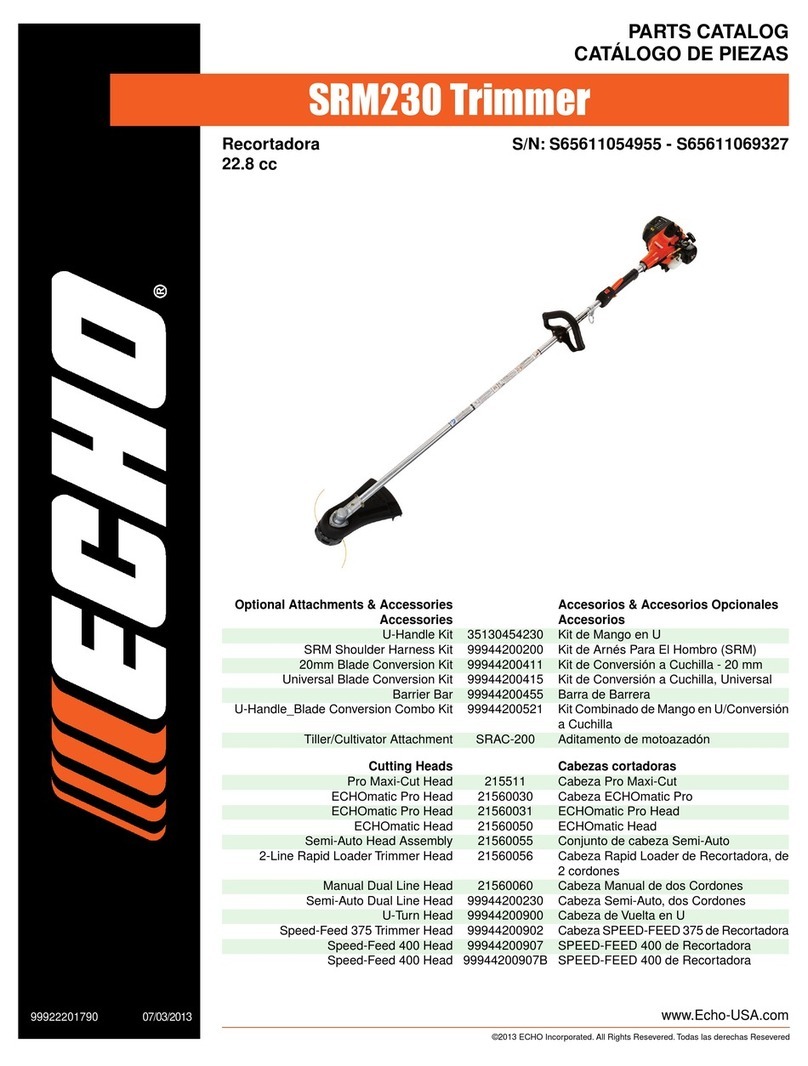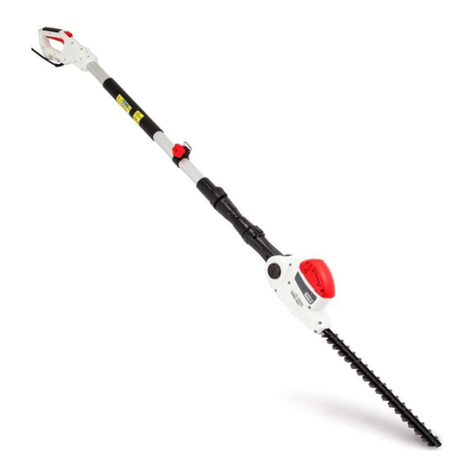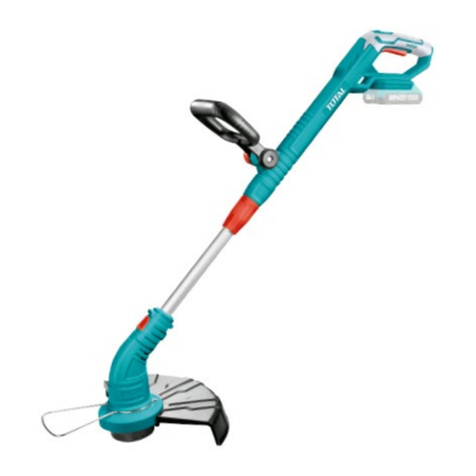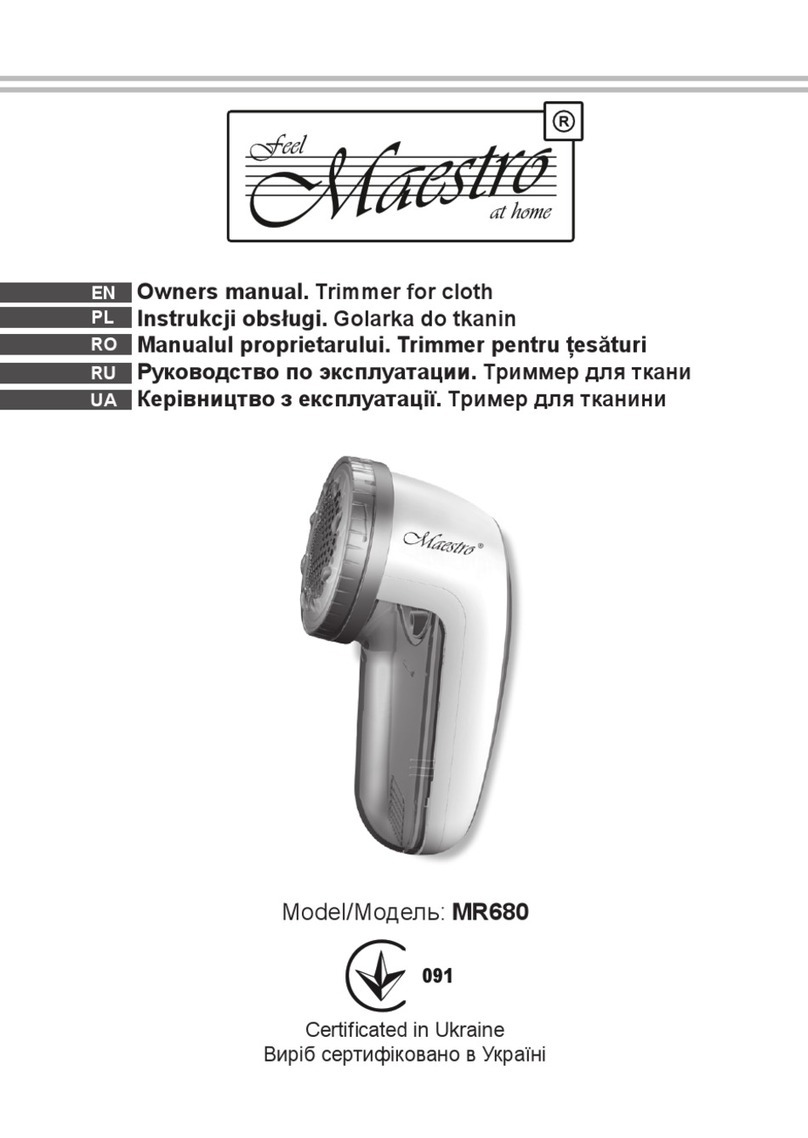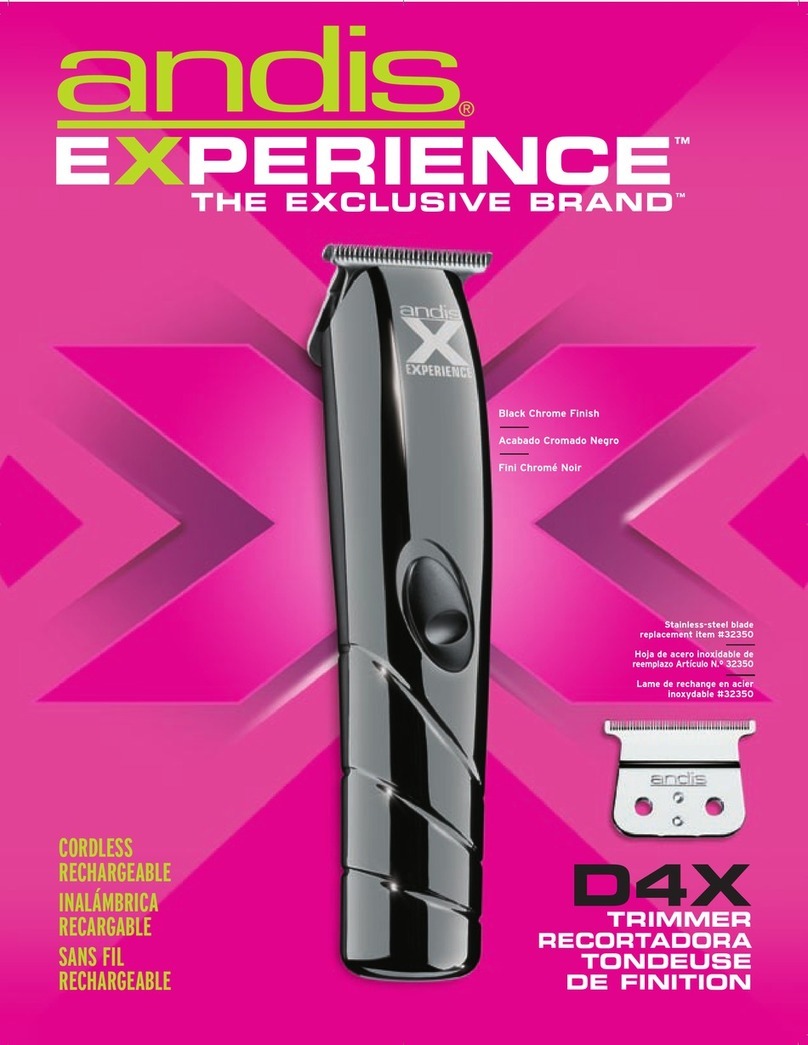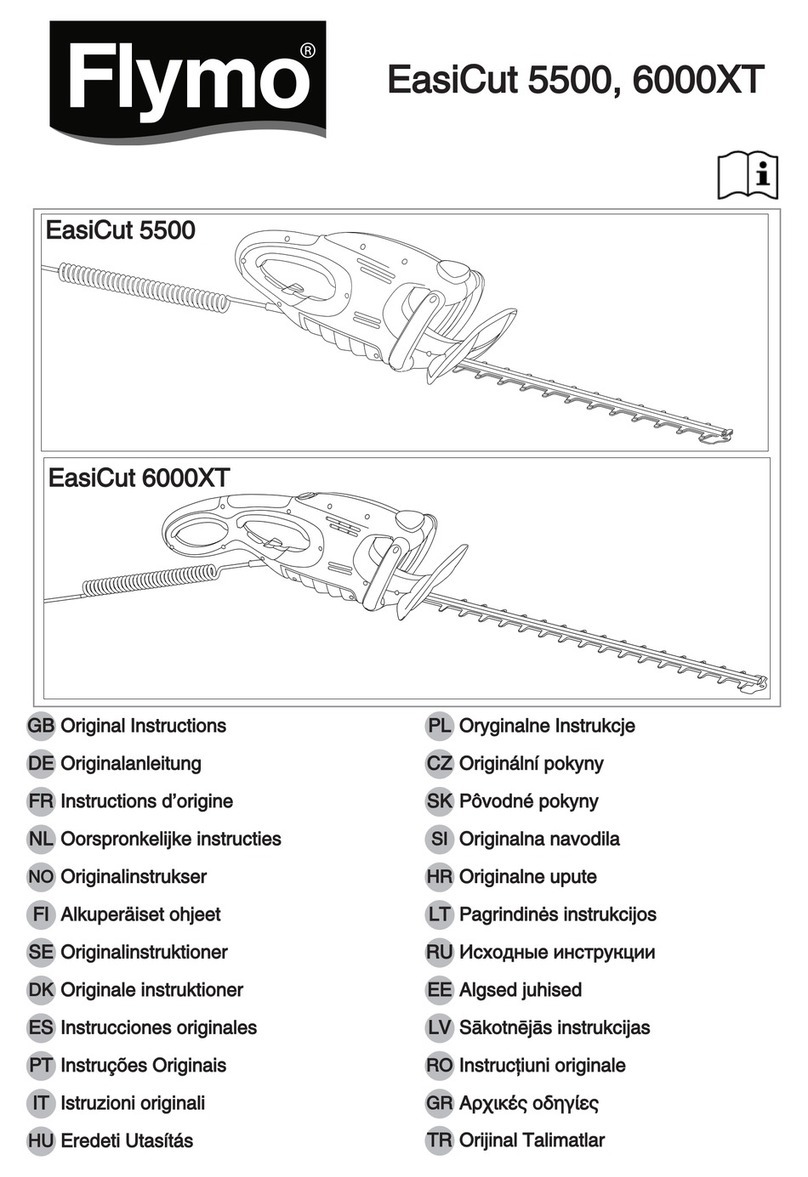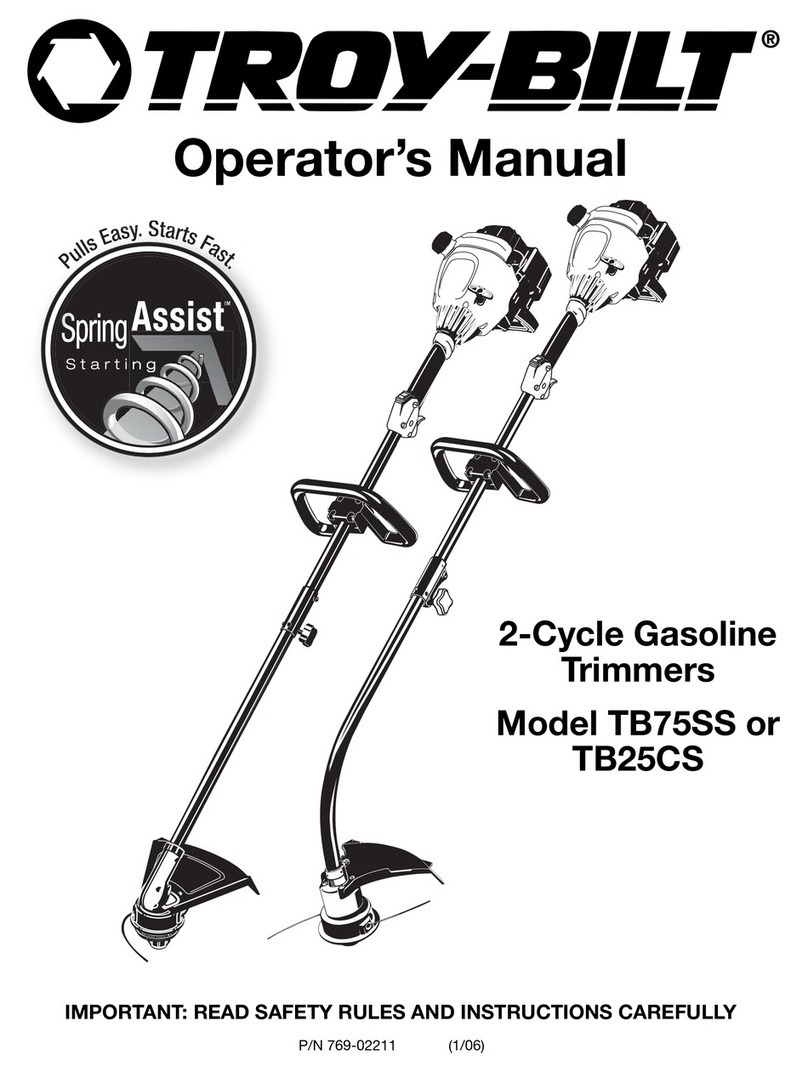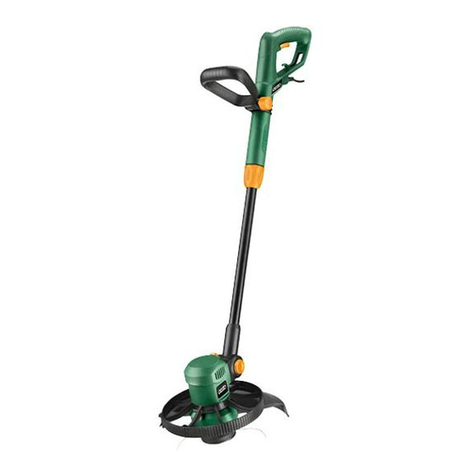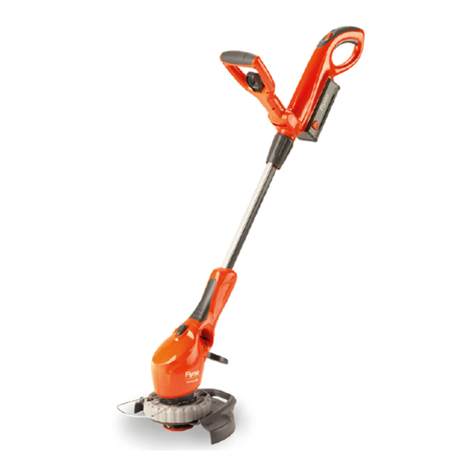
1.9. Additional safety labels.
Keep all children, bystanders and helpers 15
meters from the machine.
Warning against flying objects wear helmet,
goggles and ear protection.
Warning: Danger from hot components,
especially exhaust - Keep clear of combustible
materials.
1.10. Additional safety instructions.
1.10.1. This machine may only be used for
trimming grass. NEVER use for other purposes,
as this may result in serious injury! Safety
instructions must be observed. DO NOT
EXPOSE YOURSELF OR OTHERS TO THE RISKS.
Follow these general instructions -
ALWAYS wear safety goggles for eye
protection.
Long hair must be tied back.
DO NOT wear loose clothing or jewelry that
could get caught in moving parts of the
machine. Safe, strong, non-slip safety shoes
should be worn.
It is recommended that the legs and feet
are fully protected, to protect themselves
during the operation against flying objects.
1.10.2. Check the entire machine for
loose/missing parts (nuts, bolts, screws, etc.).
Tighten/ replace before using the machine. DO
NOT use accessories with this machine other
than those recommended/supplied by the
manufacturer. Otherwise serious injuries to
the user or bystanders as well as damage to
the machine will result.
NEVER use the machine
with a saw blade attachment it is STRICTLY
FORBIDDEN.
Keep the handles free of oil and fuel.
ALWAYS use the correct interface handles
and shoulder strap.
DO NOT smoke when mixing fuel or when
filling the tank.
DO NOT mix fuel in an enclosed area or
near open fires.
Make sure there is sufficient ventilation.
Mix and store the fuel mixture in a
correctly marked container, which is
allowed by local regulations.
1.10.3. During and after use the engine and
exhaust will be very HOT you must keep all
your all parts of your body and clothing
including all combustible materials clear of the
engine and exhaust.
1.10.4. DO NOT use the machine during or
after rain, snow or sleet. The floor will become
slippery. DO NOT use the machine on a slope
or uneven ground or if there is the chance of
slipping or losing the stability.
1.10.5. If you trip or fall whilst machine is in
use you MUST immediately release the
throttle, and turn off the ignition switch.
1.10.6. If you hit any obstacles you must stop
the machine and remove the HT lead so that
you can inspect the machine. IF the machine is
damaged in any way you MUST get it repaired
before restarting work.
1.10.7. DO NOT use a damaged machine or a
machine with a blunt, cracked or damaged
cutter blade or trimmer head.
1.10.8. If any trimmed materials get tangled in
the nylon cord or cutting blade you MUST stop
the machine and remove the HT lead. Onley
then can you clear any blockages.
1.10.9. DO NOT wear rings and jewelry or
loose, dangling clothing that could get caught
in the machine. DO NOT wear footwear with
unprotected toes and DO NOT work barefoot
or without leg protection. In certain situations,
you have to wear head protection.
1.10.11.DO not use the brush cutter for
trimming trees.









